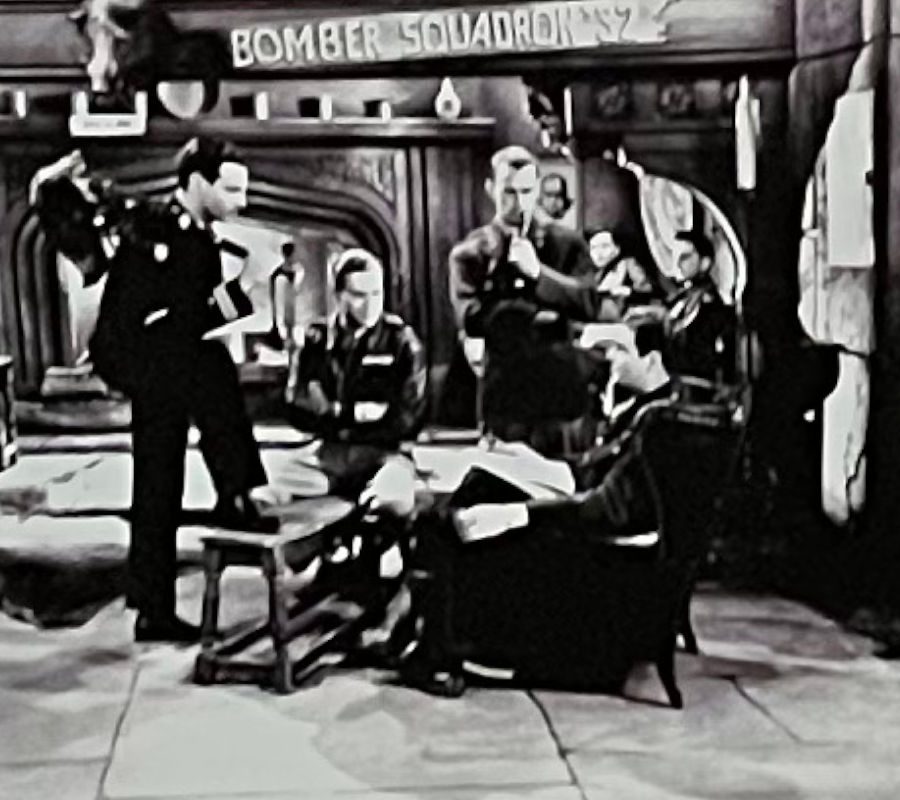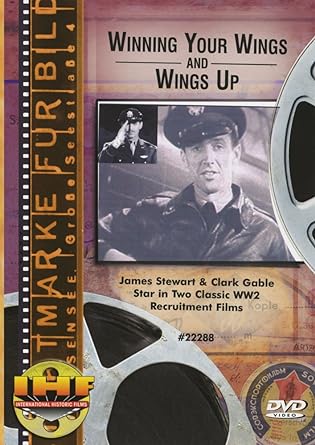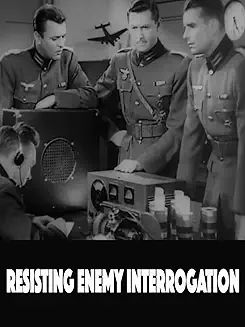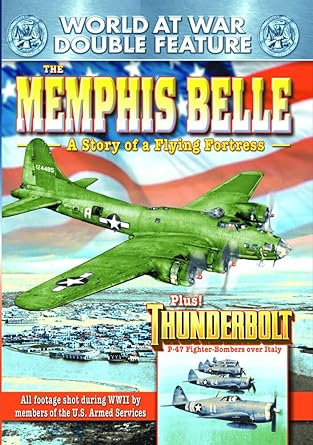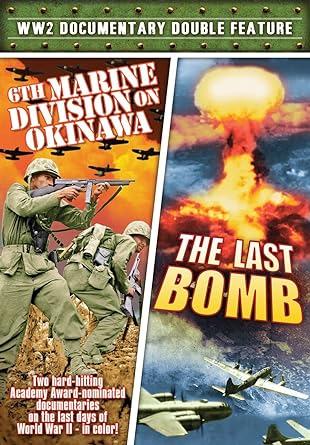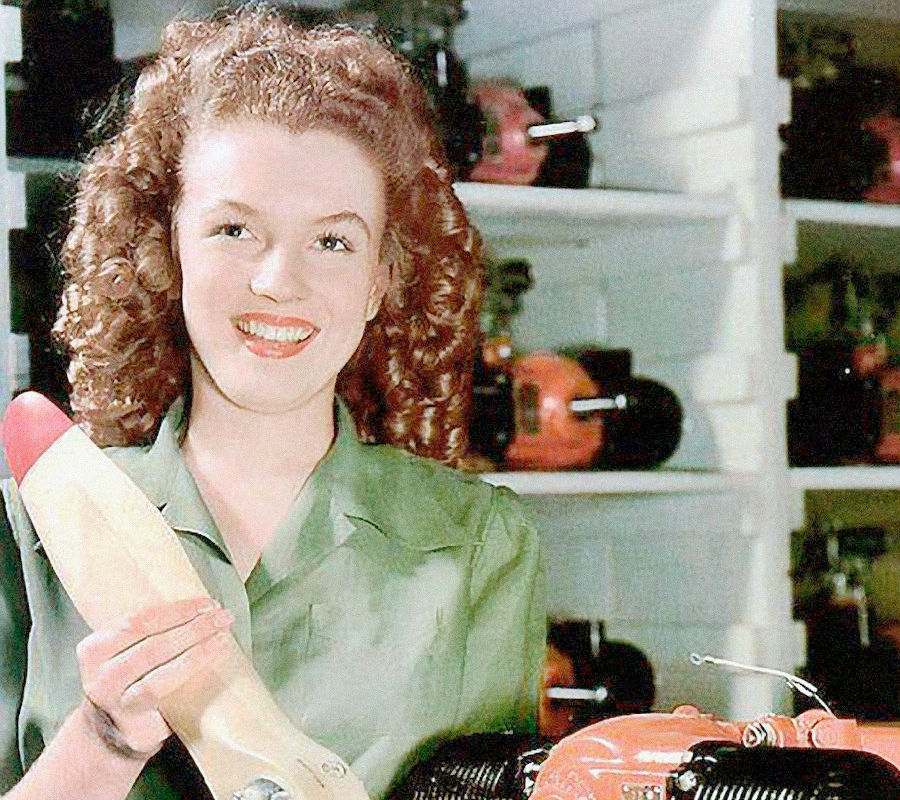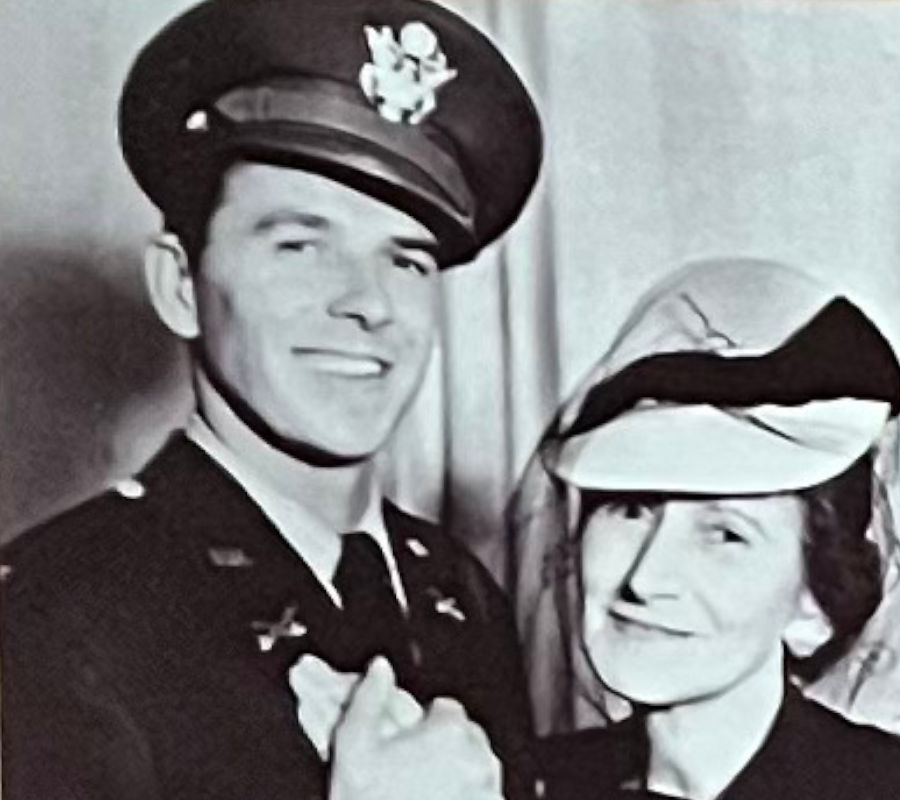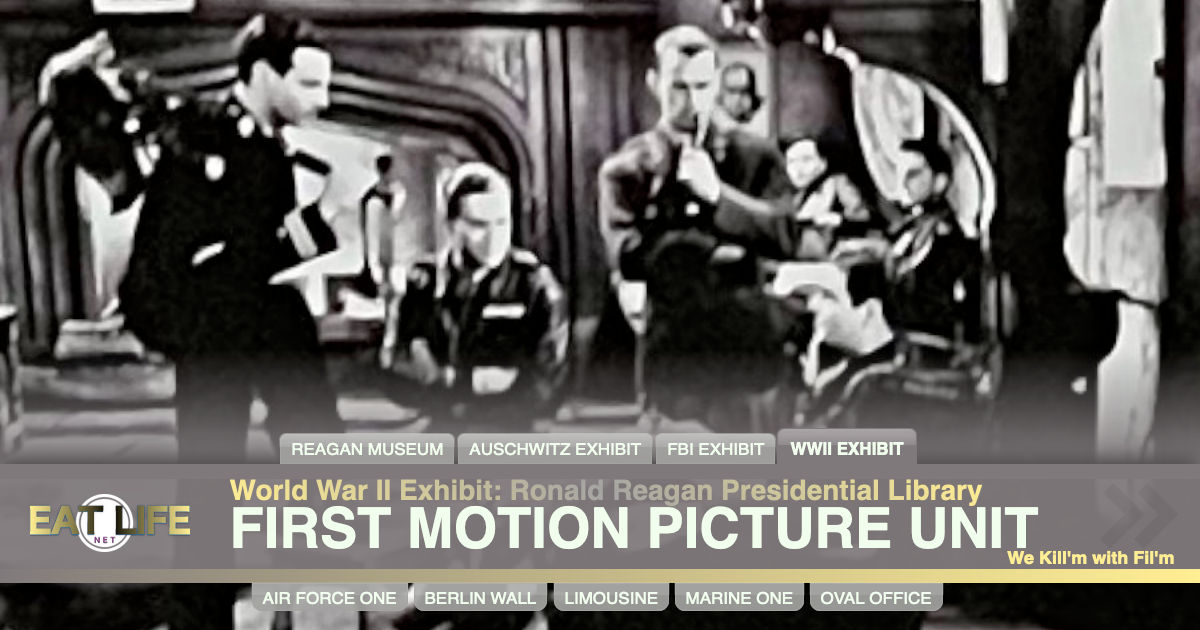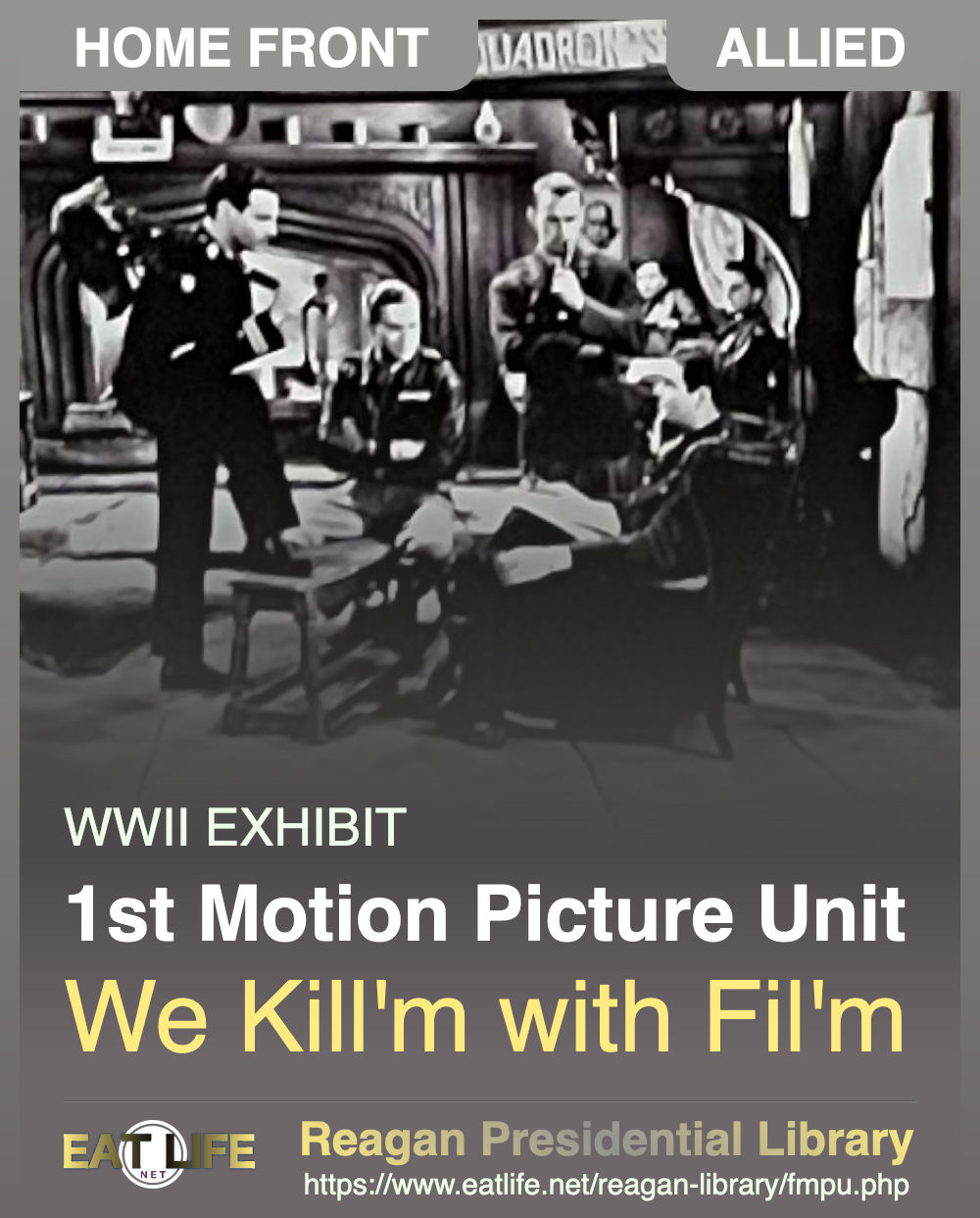The US Army Air Forces needed to recruit pilots and turned to Hollywood for help. They started a USAF motion picture unit. Jimmy Stewart was ordered to star in its movie Winning Your Wings as a pilot. Over 150,000 men signed up after the film was released. Then they started making specific training films like how to fly a particular plane, top secret films like pilot's-eye view flying over Japan. One was produced as part of the briefing on the mission to drop the atomic bomb. They produced over 300 films in three years.
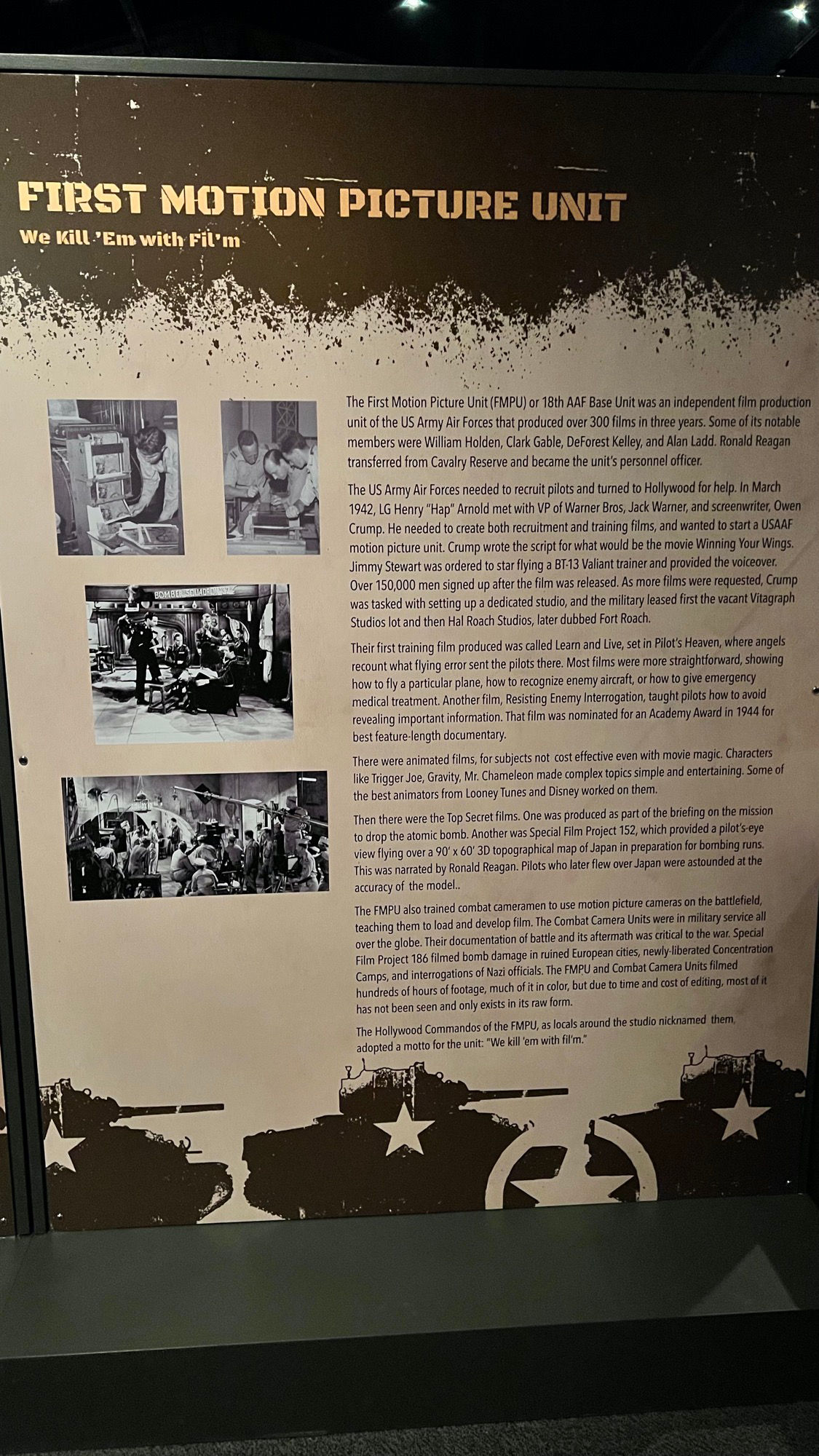
We Kill'm with Fil'm
The First Motion Picture Unit (FMPU) or 18th AAF Base Unit was an independent film production unit of the US Army Air Forces that produced over 300 films in three years. Some of its notable members were William Holden, Clark Gable, DeForest Kelley, and Alan Ladd. Ronald Reagan transferred from Cavalry Reserve and became the unit's personnel officer.
The US Army Air Forces needed to recruit pilots and turned to Hollywood for help. In March 1942, LG Henry "Hap" Arnold met with VP of Warner Bros, Jack Warner, and screenwriter, Owen Crump. He needed to create both recruitment and training films, and wanted to start a USAF motion picture unit. Crump wrote the script for what would be the movie Winning Your Wings. Jimmy Stewart was ordered to star flying a BT-13 Valiant trainer and provided the voiceover. Over 150,000 men signed up after the film was released. As more films were requested, Crump was tasked with setting up a dedicated studio, and the military leased first the vacant Vitagraph Studios lot and then Hal Roach Studios, later dubbed Fort Roach.
Their first training film produced was called Learn and Live, set in Pilot's Heaven, where angels recount what flying error sent the pilots there. Most films were more straightforward, showing how to fly a particular plane, how to recognize enemy aircraft, or how to give emergency medical treatment. Another film, Resisting Enemy Interrogation, taught pilots how to avoid revealing important information. That film was nominated for an Academy Award in 1944 for best feature-length documentary.
There were animated films, for subjects not cost effective even with movie magic. Characters like Trigger Joe, Gravity, Mr. Chameleon made complex topics simple and entertaining. Some of the best animators from Looney Tunes and Disney worked on them.
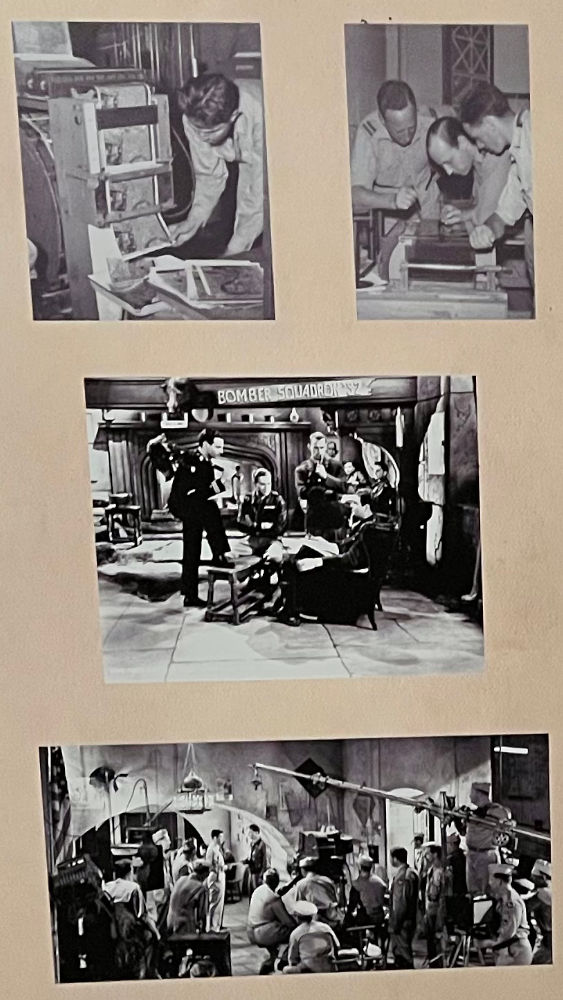 Then there were the Top Secret films.
One was produced as part of the briefing on the mission to drop the atomic bomb.
Another was Special Film Project 152, which provided a pilot's-eye view flying over a 90' x 60' 3D topographical map of Japan in preparation for bombing runs.
This was narrated by Ronald Reagan.
Pilots who later flew over Japan were astounded at the accuracy of the model.
Then there were the Top Secret films.
One was produced as part of the briefing on the mission to drop the atomic bomb.
Another was Special Film Project 152, which provided a pilot's-eye view flying over a 90' x 60' 3D topographical map of Japan in preparation for bombing runs.
This was narrated by Ronald Reagan.
Pilots who later flew over Japan were astounded at the accuracy of the model.
The FMPU also trained combat cameramen to use motion picture cameras on the battlefield, teaching them to load and develop film. The Combat Camera Units were in military service all over the globe. Their documentation of battle and its aftermath was critical to the war. Special Film Project 186 filmed bomb damage in ruined European cities, newly-liberated Concentration Camps, and interrogations of Nazi officials. The FMPU and Combat Camera Units filmed hundreds of hours of footage, much of it in color, but due to time and cost of editing, most of it has not been seen and only exists in its raw form.
The Hollywood Commandos of the FMPU, as locals around the studio nicknamed them adopted a motto for the unit: "We kill'm with fil'm."
Overview of the Army Air Corps' First Motion Picture Unit from World War II
WIKIPEDIAThe 18th AAF Base Unit
Motion Picture Unit
Originally known as the First Motion Picture Unit, Army Air Forces, was the primary film production unit of the U.S. Army Air Forces (AAF) during World War II, and was the first military unit made up entirely of professionals from the film industry. It produced more than 400 propaganda and training films, which were notable for being informative as well as entertaining.Films for which the unit is known include Resisting Enemy Interrogation, Memphis Belle: A Story of a Flying Fortress and The Last Bomb-all of which were released in theaters. Veteran actors such as Clark Gable, William Holden, Clayton Moore, Ronald Reagan, and DeForest Kelley, and directors such as John Sturges served with the 18th AAF Base Unit. The unit also produced training films and trained combat cameramen.
Fort Roach
Personnel assigned to the 18th AAF Base Unit included some of the most well known film professionals of the day, as well as filmmakers who would have great success after the war. Actors such as Clark Gable, William Holden and Alan Ladd, and directors including Richard L. Bare and John Sturges served with the unit. Future president Ronald Reagan, who transferred from the cavalry reserve, was a captain in the unit. He was the personnel officer and was responsible for maintaining personnel files and orienting new recruits to the operational aspects of Fort Roach. Later he was appointed adjutant. Like the other notable actors Reagan appeared in the films produced by the unit, but to avoid distracting the audience they were eventually relegated to narrating the films.The 18th AAF Base Unit was unique in comparison to other military units in the methods employed to obtain recruits. Many members were well into middle age and unsuitable for combat duty. Few of the men in the unit were ever sent to a war zone. Due to its special mission, the unit was able to bypass the normal recruiting channels and was empowered to draft directly. Basic Training was not as rigorous as that experienced by most servicemen. According to former unit member Howard Landres, Basic Training was mandatory, "but it wasn't the basic-basic."
Military decorum at Fort Roach was less formal than in most units. Saluting was optional, and unit members called each other by their first names. Hal Roach Studios did not have barracks, so commuting from home was commonplace. Men from out of the area were billeted at nearby Page Military Academy.
Special Film Project 152
One of the most important assignments of the unit was to develop navigational and topographic materials to support the bombing campaign against Japan. This top secret series of films, code-named "Special Film Project 152" was, according to Gregory Orr, "perhaps the most important and challenging effort to come from the First Motion Picture Unit." The unit was given forty days to produce the films which would be used by B-29 Superfortress crews.n 1944 the United States readied its forces in the Pacific Theatre for the final assault on the Japanese mainland. The 20th Air Force, tasked with carrying out the bombing campaign, lacked necessary information regarding flight routes and targeting data. Orr explains what the unit was expected to deliver:
Gregory Orrevery landmark, check point, initial point and bomb release point ... every radar center, every Japanese naval vessel in a harbor, every railroad, building and forest and rice paddies ... The objects had to appear not only as seen on a clear day by the naked eye, but also as viewed by a radar screen through an overcast.After conducting extensive research on the topography of Japan, an 80-by-60-foot scale model (1 foot: 1 mile) of target areas was fabricated complete with mountains, buildings, railroads and the rice paddies. It also depicted clouds and fog. The films were produced using a specially mounted overhead camera. The camera was motorized and could be moved to simulate an airplane's flight over the model. According to the New York Sun, "the camera recorded what the crew of a B-29 would see from 30,000 feet." Using the films, pilots of the 20th Air Force easily found their targets and were amazed at the level of detail and the accuracy that the unit was able to produce. General Arnold said the following of the units accomplishment: "there never has been anything quite so good as this for briefing men on dangerous missions."
Special Film Project 186
After Nazi Germany surrendered in May 1945, General Arnold ordered Crump to document the extent of the damage caused by aerial bombardment. This project was code-named "Special Film Project 186." Crump and his crew, using color film, surveyed bomb damage inflicted on the major European cities. In addition, Crump recorded the debriefings of Nazi civilian and military personnel in Allied custody such as Hermann Goring, as well as the capture of the Ohrdruf and Buchenwald concentration camps by American soldiers. Upon viewing the film of the camps for the first time, Malvin Wald recollected, "Even though it was a summer day, Reagan came out shivering-we all did. We'd never seen anything like that."Crump and his crew shot hundreds of hours of film-most of which has never been seen. The Army Air Forces declined to fund the production and editing of the footage.
